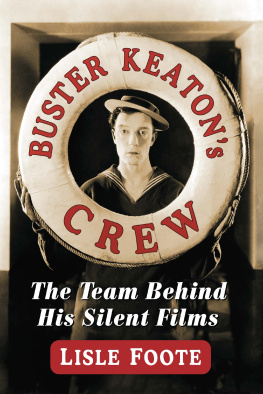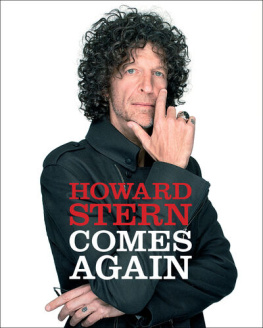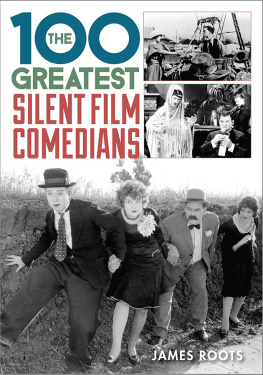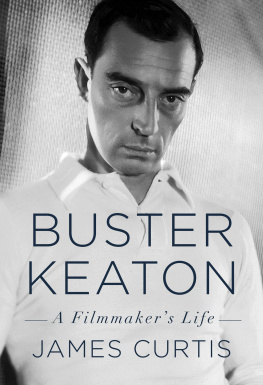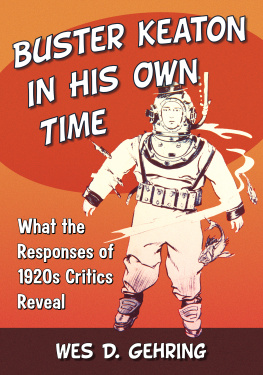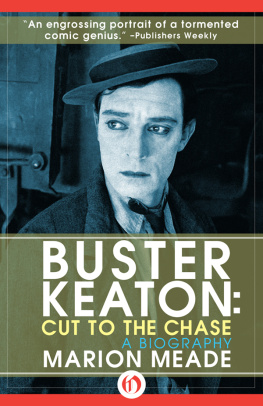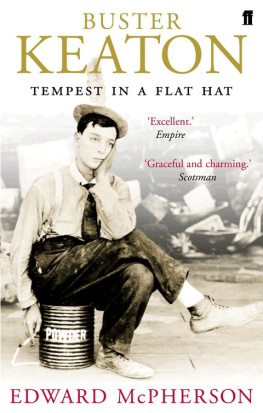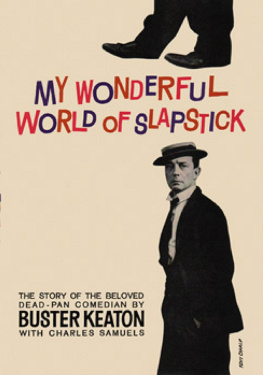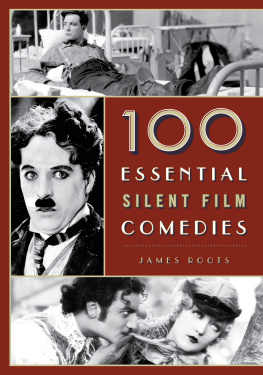
Buster Keatons Crew
The Team Behind His Silent Films
Lisle Foote

McFarland & Company, Inc., Publishers
Jefferson, North Carolina
LIBRARY OF CONGRESS CATALOGUING DATA ARE AVAILABLE
BRITISH LIBRARY CATALOGUING DATA ARE AVAILABLE
e-ISBN: 978-1-4766-1806-7
2014 Lisle Foote. All rights reserved
No part of this book may be reproduced or transmitted in any form or by any means, electronic or mechanical, including photocopying or recording, or by any information storage and retrieval system, without permission in writing from the publisher.
On the cover: Buster Keaton in the 1924 film The Navigator (Metro-Goldwyn Pictures Corporation/Photofest)
McFarland & Company, Inc., Publishers
Box 611, Jefferson, North Carolina 28640
www.mcfarlandpub.com
For David
who inspired my interest
in cameramen
Acknowledgments
Ray Cannon wrote in the preface to his first book How to Fish the Pacific Coast, The author had no idea that answers to the hundreds of questions involved could be so elusive and that he would spend six years finding them; if he had, he never would have started this book. Now I know what he was talking about. Luckily, I had a lot of help.
Id like to thank the following people for all of their assistance: Patricia Eliot Tobias, for editing my manuscript and for everything shed done to advance Keaton scholarship. The Daughters of Naldi always shared research tips, especially Kelly Brown who found Donald Crisps first wife, Marilyn Slater for the Elgin Lessley article, Joan Myers for her Eddie Cline theory and Rebecca Eash for Clines birth certificate. Federico Magni helped me find the old mans draft registrations. Chris Mankovsky scanned and gave me the Static Club Minutes. The Damfinos were kind enough to read some of the early versions of my research. Busters Gals on Facebook, particularly Susan Buhrman, Valerie Collins Billingsley, and Christina Dunigan, helped me with my hunt for photos. The staffs of Margaret Herrick Library, the New York Library for the Performing Arts, the Los Angeles Public Library and the UCLA Library were all helpful, particularly my co-workers at the SRLF (especially my boss Tin Tran, who let me use the microfilm reader at lunchtime). Several relatives of the crew members shared family history with me, particularly Fred Gabourie, Jr., Helen L. Zink, Karla Everett and Michael Peters. Finally, I want to thank my family for putting up with me: my brother Bill Foote and my husband David Mullen.
Preface
Buster Keaton didnt make his movies by himself, and he was the first one to say so. He was unusually honest about the collaboration on his films compared to other filmmakers. He wrote in his autobiography, The greatest thing about working in a small studio like ours was having the same bunch of men going with me as a team on each new movie. The director, two or three writers, and myself would figure out the story. But the othersthe prop man, the unit manager who found our locations, the two cameramen, the cutterall sat in with us. This book is about the people who worked with him during his years as an independent filmmaker, 1920 to 1928.
Theres no way to untangle exactly who was responsible for what. Thats why I think theres enough room in Keaton studies to remember these people, too. Ive also included some of his co-workers with Arbuckle, and some of the crew from his first film as an MGM studio employee, The Cameraman.
They were so important to Keatons life and films, yet not much was known about them. Men like Lou Anger, who introduced Keaton to Roscoe Arbuckle, which began his career in film. Frank Williams, who first showed him a camera, then let him take it apart. Elgin Lessley, the cameraman who told him that Sherlock Jr. had to be a projectionists dream. Eddie Cline, who Keaton said came up with his funniest gag, at the end of Hard Luck. They deserve to be remembered.
Keatons crew was a diverse group. They were sons of a doctor, farmers, dry goods and liquor merchants, vaudevillians, an architect-watercolorist and a bank president involved with organized crime. They came from all over the United States and abroad. Some had little formal schooling and some attended college. Most of them did some other kind of work before they went into film, from civil engineering, songwriting, and train conducting to professional baseball.
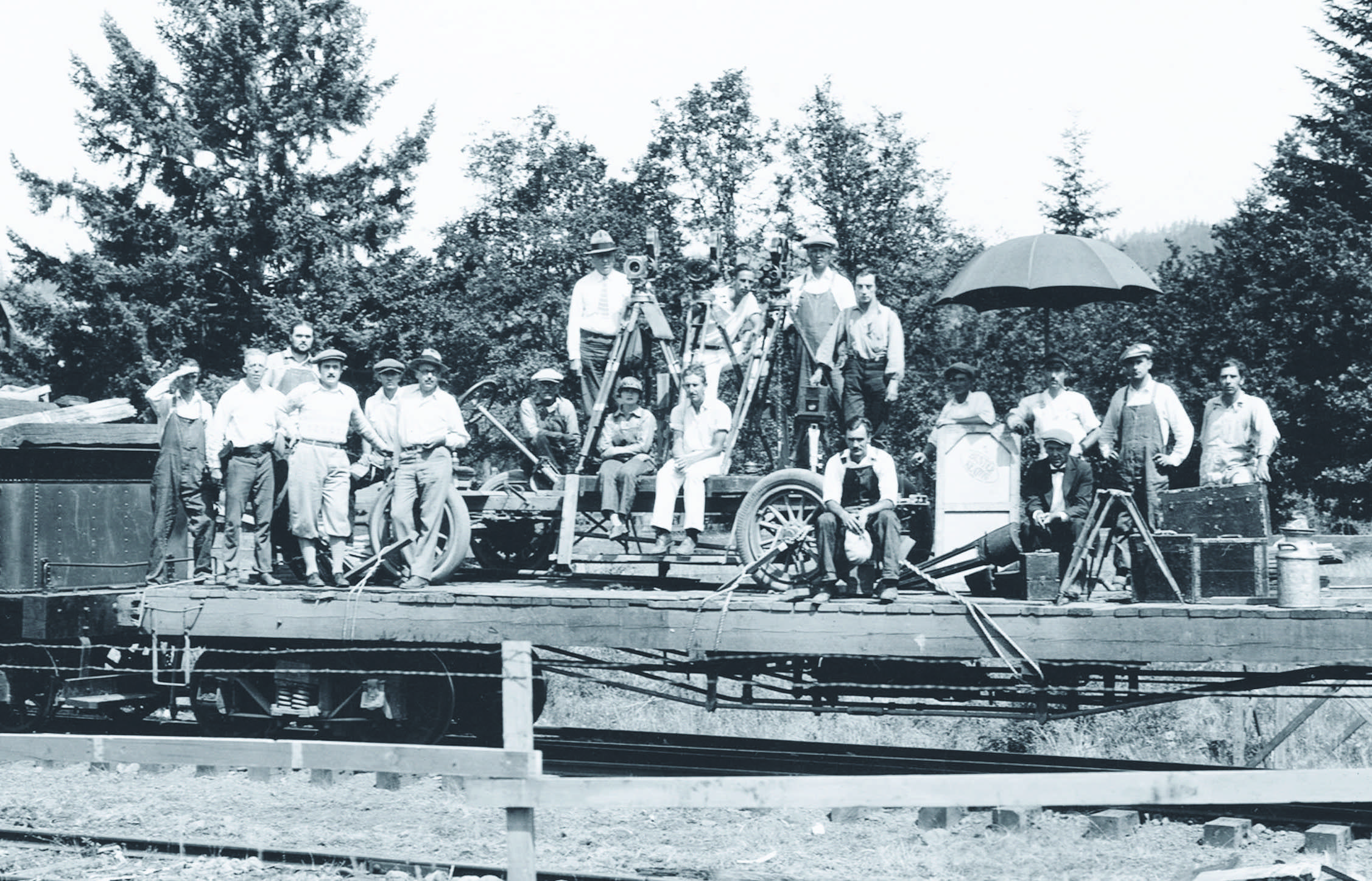
Some of the crew onThe General. Most have not been identified, but behind the cameras left to right: Dev Jennings (wearing a tie), Byron Houck, Dal Clawson, Buster Keaton. (From the collections of the Margaret Herrick Library, Academy of Motion Picture Arts and Sciences.)
Buster Keatons creative team on Three Ages (1923), from left to right: Joseph Mitchell, Clyde Bruckman, Keaton, Jean Havez, Eddie Cline. (From the collections of the Margaret Herrick Library, Academy of Motion Picture Arts and Sciences.) Keaton couldnt have made the films without them. As he said in 1965, As a rule, when Im working alone, the cameraman, the prop man, the electrician, these are my eyes out there. Id ask, Did that work the way I wanted it to? and theyd say yes or no. They knew what they were talking about.
Its impossible to improve on what Luke McKernan wrote in his blog, The Bioscope:
And why research someone so obscure? You have to ask? Is there any nobler activity out there than to recover a life? Certainly it is always excellent when anyone recovers a corner of history that has been lost or ignored, however small it may seem. Its a contribution to knowledge, and telling us something that we didnt know before is a whole lot better way to spend your time as a researcher than re-telling that which we already know. So go out and do likewiseand then tell the world about it.
A note about my sources: In the text, there are references to four different draft registrations. Not unlike the registration scene in The General, this was how it worked: All American men between particular ages had to report to their draft board on an appointed day. On June 5, 1917, during World War I, all men ages 21 to 31 had to present themselves, and the boards gathered information on their addresses, occupations, dependents, and physical disabilities. One year later, June 5, 1918, they held a registration day for all the men who had turned 21 since the previous event, and on September 12, 1918, they had a supplemental draft for all men ages 18 to 45 who hadnt already filled out the form. The fourth draft in the text, held during World War II, was sometimes known as the old mans draft: All American men ages 42 to 64 had to register with the Selective Service on April 27, 1942, not for active duty but in case they were needed for national service on the home front. The rest of the draft information for the Second World War isnt available yet.
At the end of individual sections there are further notes on research and citations to census data, where that information is available. These are in addition to the source notes at the back of the book. Because this material broadly informs each section, it is included at the end of the corresponding profile, rather than attached to specific sentences as notes.
Next page
